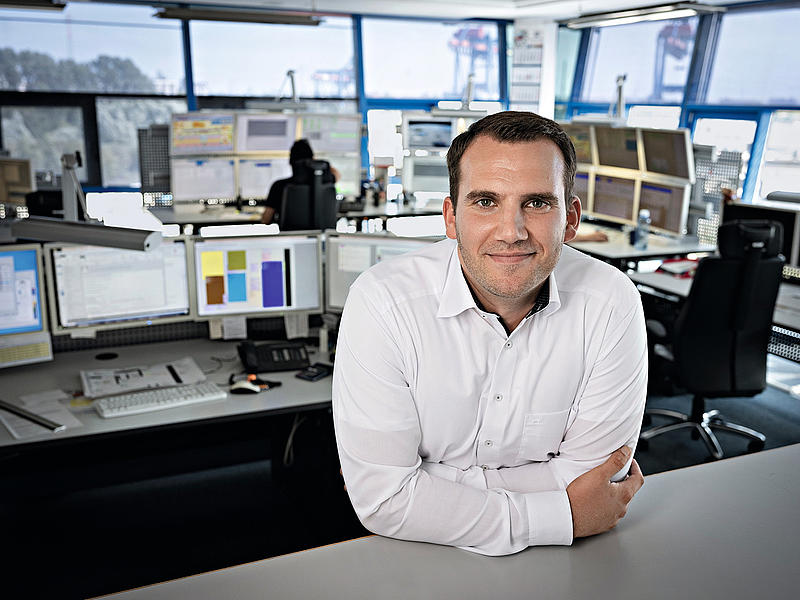Quicklinks
Quicklinks
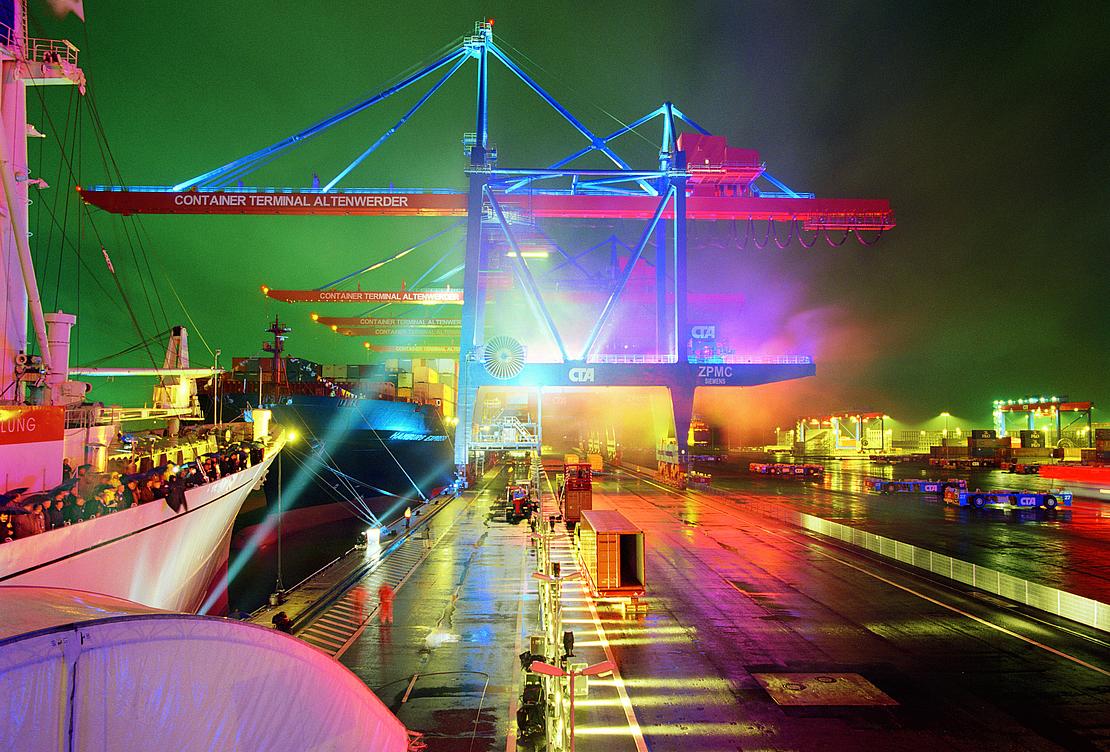
“Best in class” – such was the glowing verdict recently conferred by the renowned Global Institute of Logistics on HHLA Container Terminal Altenwerder (CTA). The high-tech facility is still being inundated with awards and curious visitors. The original objectives of CTA’s planners were most certainly ambitious – yet barely anybody then could picture the scale of today’s success. The facility has meanwhile rapidly and reliably handled more than 40 million standard containers (TEU).
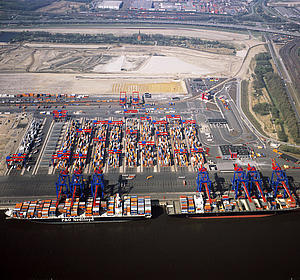
When the first container ship, the "Nedlloyd Africa", was handled at the CTA on 25 June 2002, not all technical and software problems had been overcome by a long shot. But despite a few teething troubles, the terminal quickly arrived at the top of the European league. Today, Altenwerder has taken the lead in many areas, sums up Managing Director Oliver Dux: "We are at the forefront worldwide". On many of the main performance indexes, the terminal is one of the frontrunners.
The first concrete steps in the planning process for constructing a new container terminal in Altenwerder were taken in 1990. After the fall of the Iron Curtain, in Hamburg there were hopes of a port boom. Six years passed before the Higher Administrative Court gave the green light for construction on 23 September 1996. Shortly afterwards HHLA was awarded the contract for implementing the terminal project, while the City of Hamburg commenced preparing the plots for the facility and the Logistics Centre directly adjacent. In the end around 300 million euros were invested in infrastructure for the largest single project in the Port of Hamburg since 1945.
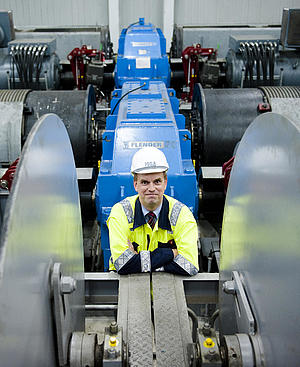
HHLA’s planning team was meanwhile addressing the system challenge. The criteria were obvious: Reliable high performance for growing ship sizes – on limited space and in high-wage Germany. After thorough examination of different variants including some conventional ones, in spring 1999 HHLA took a bold decision for a giant leap forward, aiming to form the best from all areas of technology into a new “State of the Art”. The elements of the CTA layout were container gantry cranes with a two-trolley system, unmanned AGVs (Automatic Guided Vehicles) and a block storage using rail-mounted gantry cranes (RMGs).
Each of these three innovative modules of terminal technology had been tried and tested, but never previously deployed in this combination. The situation was similar on terminal software, where some modules were already available, yet the core element, the control system for the entire operation, needed to be developed right from the beginning. Experience with automated production logistics was embodied, yet port cargo handling requires loads of over 70 tons to be shifted under open skies in all weathers. As Martin Schubring, Technical Project Manager at CTA remembers, the demands on robustness and accuracy were of a quite different order here: “We mastered this challenge – fully automated operation computers and sensors have replaced humans.”

Construction of a large on-dock container terminal with today 720 metres long tracks also proved a correct and important decision. Along with the adjacent Logistics Centre, this forms a compact, highly efficient container handling hub in a confined area. Looking back, the basic concept was correct. And not just in terms of technology: for the Port of Hamburg it came at just the right moment! Among the general public in Hamburg heated disputes about the purpose and the need for the facility still raged in the 1990s. Yet without new terminal capacities Hamburg would have been unable to hold its own during the container boom. The volume of containers in which goods were being transported across the world’s oceans was increasing year by year. Growth in container throughput at HHLA terminals, already shooting up into double digits in 1999, would have been impossible to master without the new terminal. With the help of CTA, in 2005 Hamburg temporarily advanced into 8th place among the world’s largest container ports.
So CTA was challenged right from the start. The innovative facility had to produce peak performance immediately, final extension to 26 storage blocks was deferred by several years. Another element in the developers’ strategy was that the facility should first enter operation in a basic variant. Dr. Thomas Koch, Project Manager at the time, recalls: “We opted for the basic principle: Start simply, then raise the complexity step by step.” And this principle still applies today. The entire operating process of the facility is continually being checked for weak points and bottlenecks, but also for additional development potential. Stability and reliability have been continuously improved in recent years, and additional innovations have regularly been added. Since the beginning of 2012 a further leap in productivity has been reached with the “Dual cycle” project. Loading and discharge can be done simultaneously wherever possible so as to utilize container gantry cranes and storage blocks still more efficiently. Nor is any standstill to be anticipated thereafter: Everywhere there is still potential for improvements.
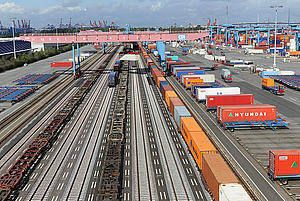
In 2016 CTA invested in the expansion of its rail terminal. Already before beeing the largest container rail terminal in Europe the capacity for handling container was increased. Two tracks were added to the rail terminal supporting the environmentally mode of transport. All now nine tracks are able to handle trains with a length of 720 meters.
On the way of optimization and digitalisation the processes for rail handling were adapted to new technologies. A train gate with OCR-technology (Optical Character Recognition) stands over the two feeder tracks leading to CTA. The use of cameras simplied, fastend and made working procedures more reliable.
Especially to the subject of sustainability CTA stands out as the world's first and only certified zero-emission terminal. Apart from its high space efficiency – an important point for the conservation of resources – the theme of electrification plays a pivotal role. With most large pieces of equipment meanwhile being powered by electricity derived from regenerative sources, CO2 emissions here are minimal compared to normal terminals. From the end of 2022 onwards, only purely electrically operated AGV will be used at the terminal and achieve further major savings.
Yet Container Terminal Altenwerder only displays its most vital quality to visitors at second glance. Fascinated by its automated processes, they easily overlook what really makes this terminal: The creativity, know-how and dedication of all the staff that keep this complex facility running and its automation systems in operation. “The most essential secret of our success is that every one of the staff is continuously improving this facility,” stresses Patrick Krawutschke, lead operating manager.
